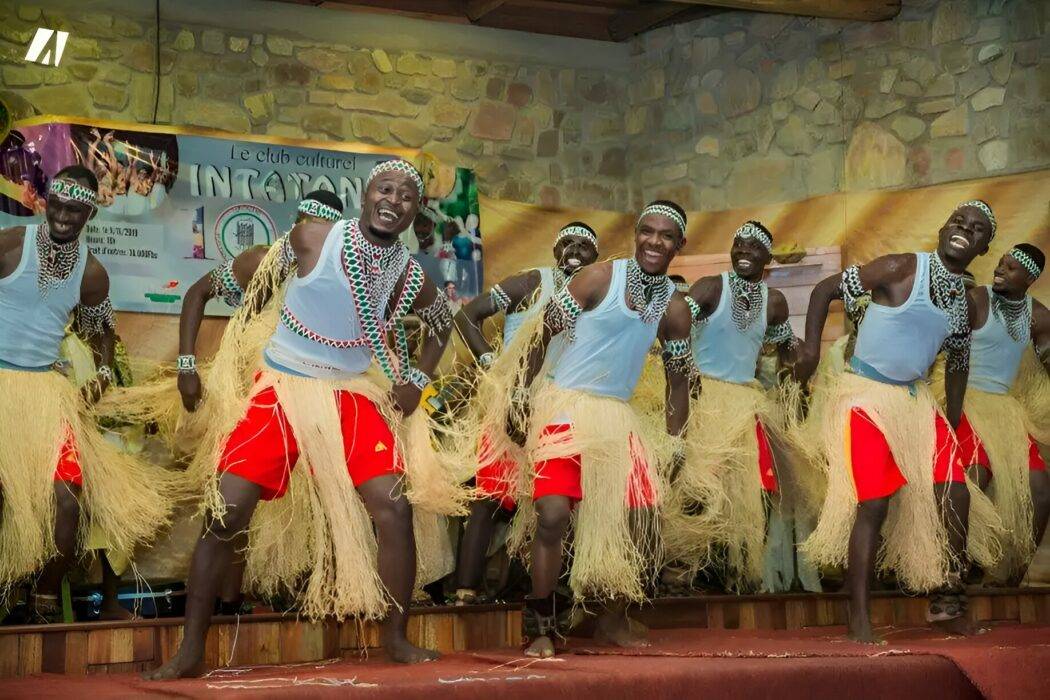Among Burundi's cultural treasures, the dance Agasimbo is distinguished by its energy, acrobatics and deep cultural significance. Originating in the south of the country, this masculine dance is a living symbol of Burundian identity.
Origins and meaning
Agasimbo is a traditional dance performed mainly in the province of Makambaparticularly in the communes of Makamba and Kayogoro. It is deeply rooted in local traditions and is often associated with community celebrations and rites of passage.
Dance features
This dance is characterized by impressive acrobatic movements, in which the dancers, nicknamed "dancer-toupies", turn on themselves with great agility. They wear bells (amayugi) ankles and headdresses adorned with rooster feathers (imibíko)adding a visual and aural dimension to the performance.
The dance is accompanied by chants and percussive rhythms, creating a festive and engaging atmosphere. The synchronized movements and coordination between the dancers testify to remarkable discipline and mastery.
Transmission and Preservation
Passed down from generation to generation, Agasimbo is a precious cultural heritage. It is taught to young people in local communities, ensuring its continuity. Cultural groups and community initiatives are actively working to preserve this tradition in the face of modern influences.
Representations and Recognition
Agasimbo has gone beyond Burundi's borders, with performances at international cultural events highlighting the richness of Burundi's heritage. It is also presented at official ceremonies and national festivals, reinforcing its emblematic status.
The Agasimbo dance is much more than a simple artistic performance; it is a reflection of Burundi's history, culture and community spirit. By celebrating and preserving it, the country honors its past while inspiring future generations.


There are no reviews yet. Be the first one to write one.